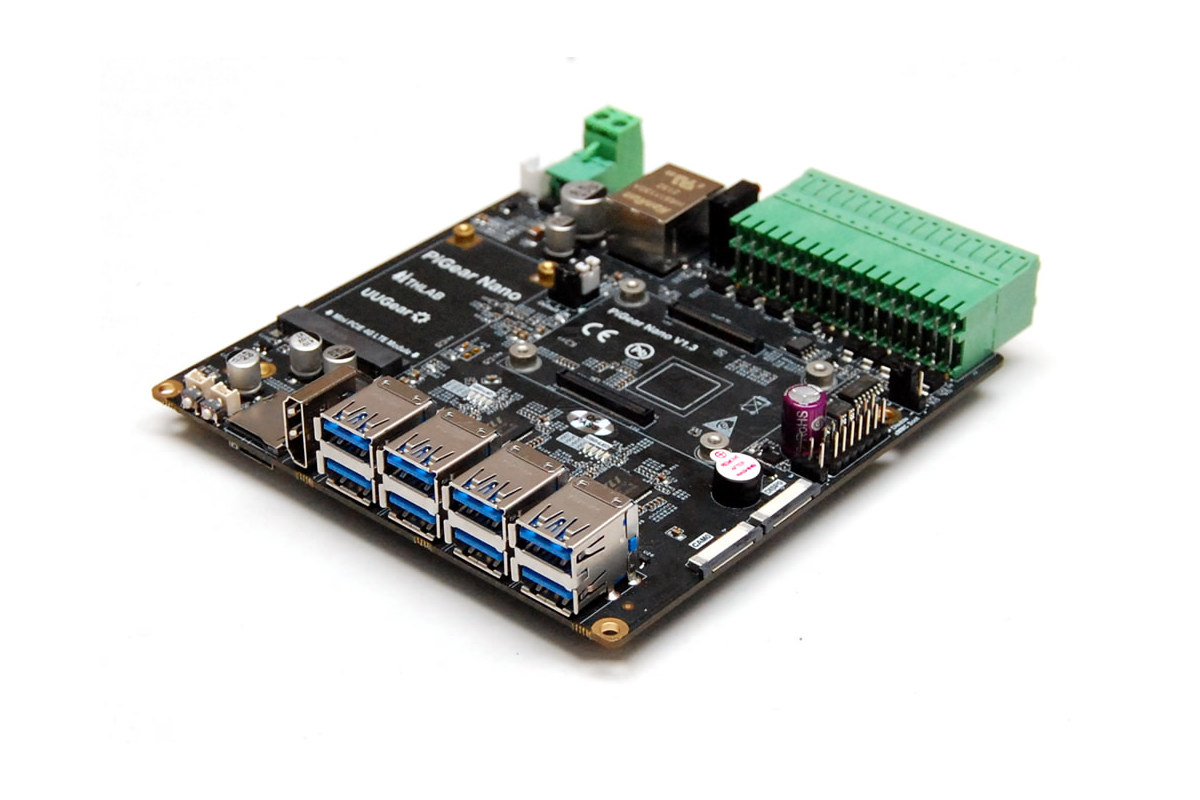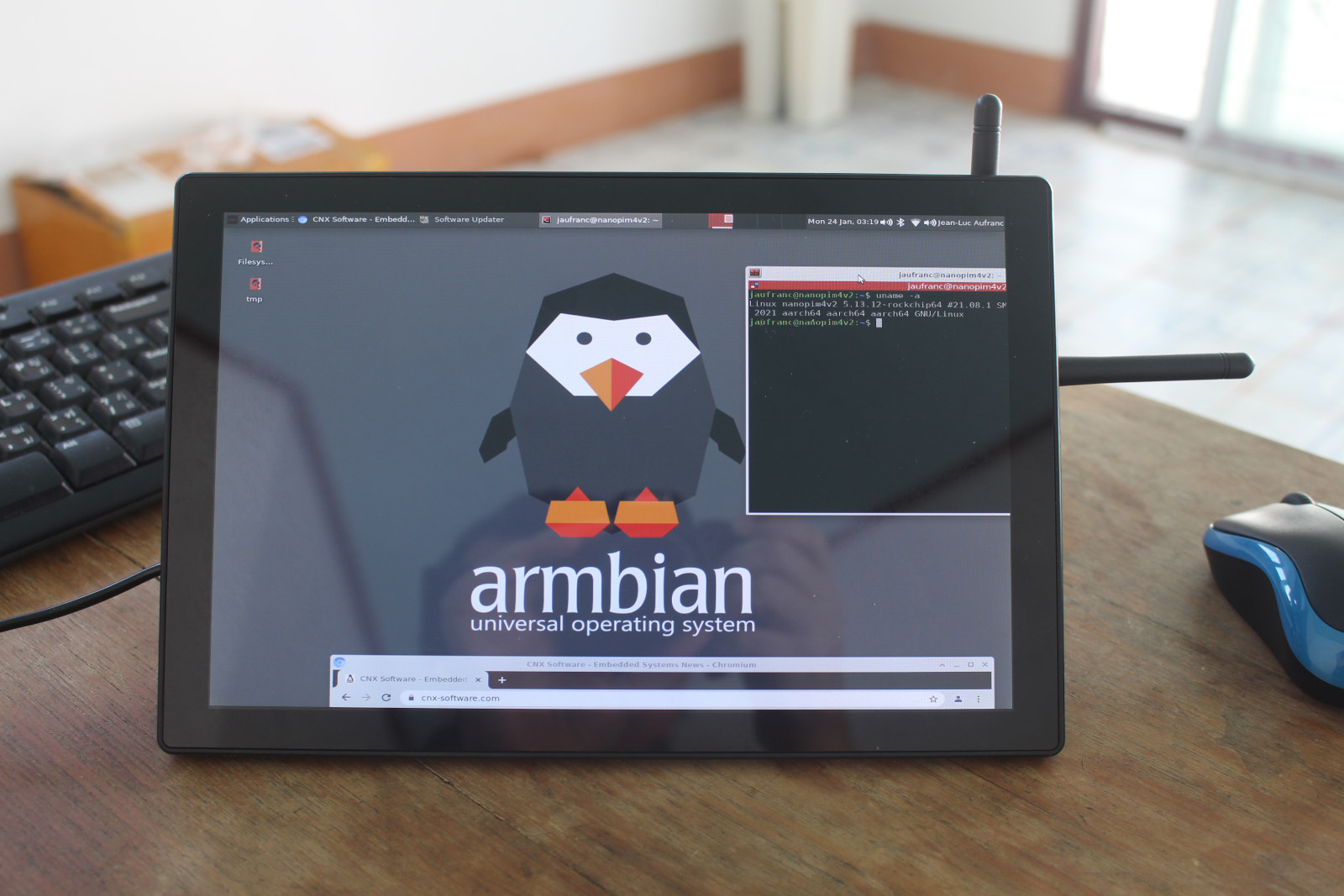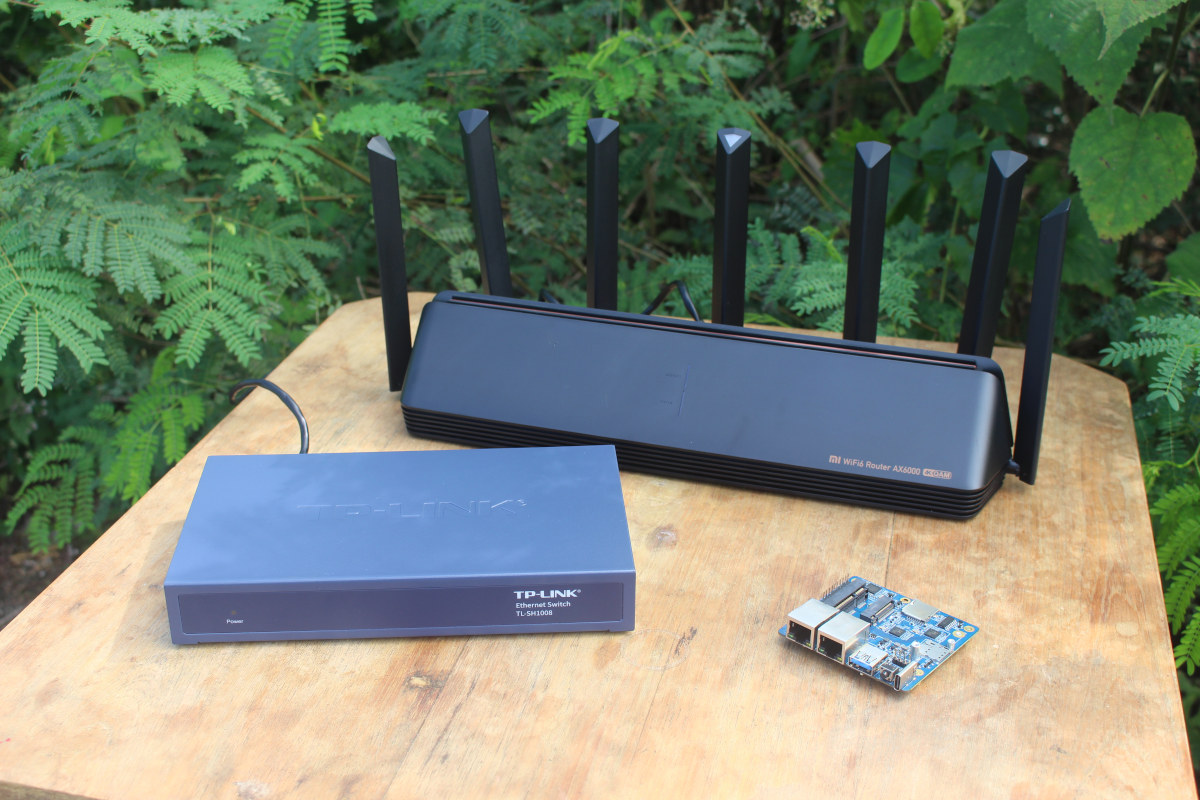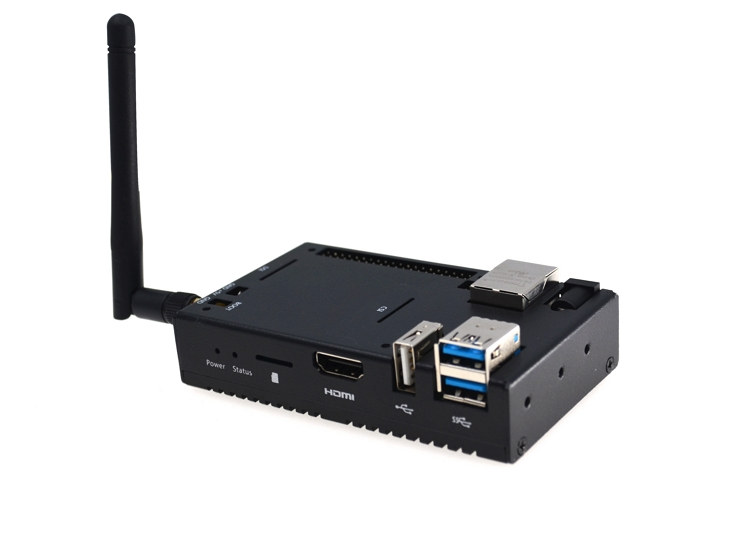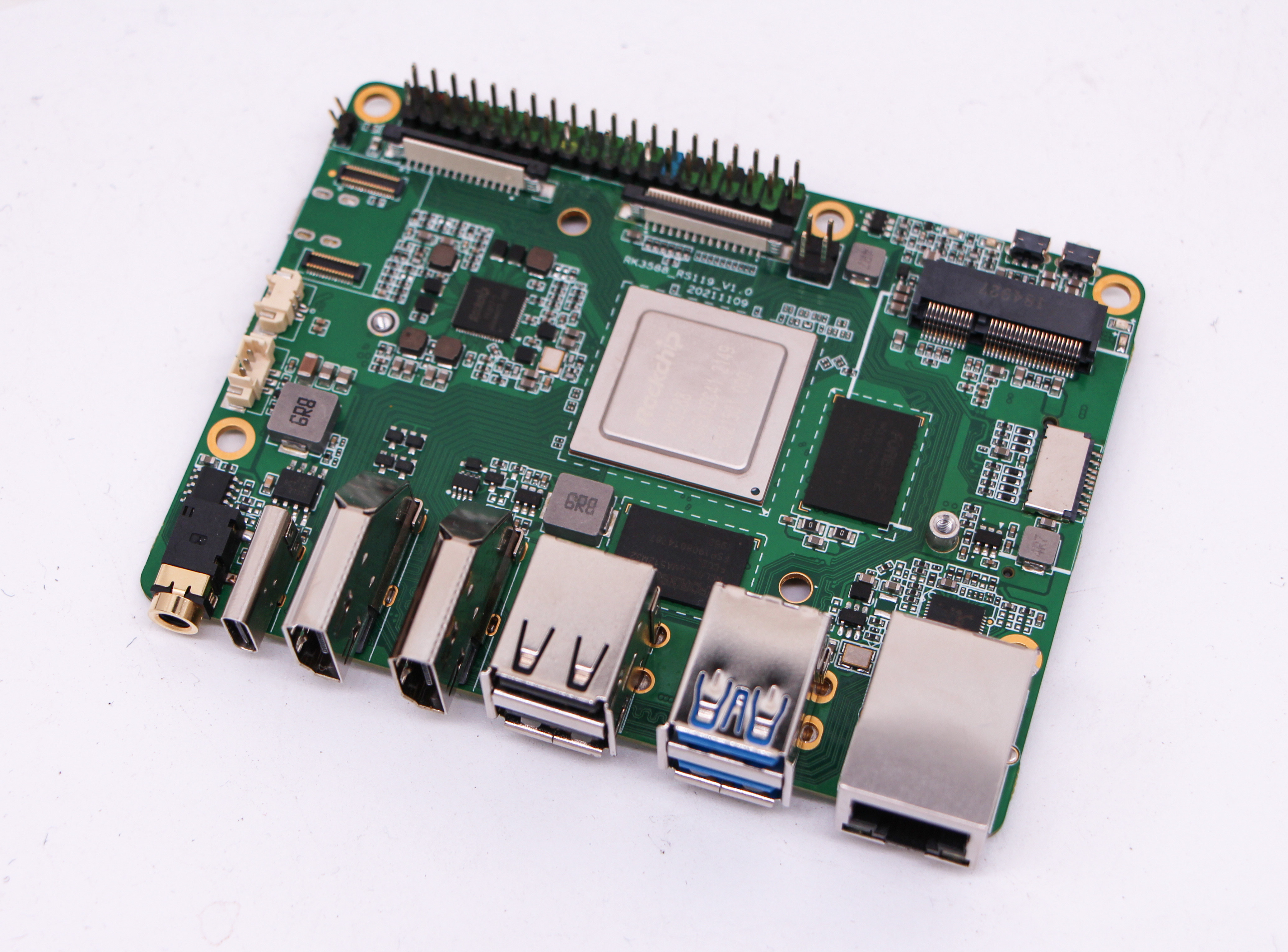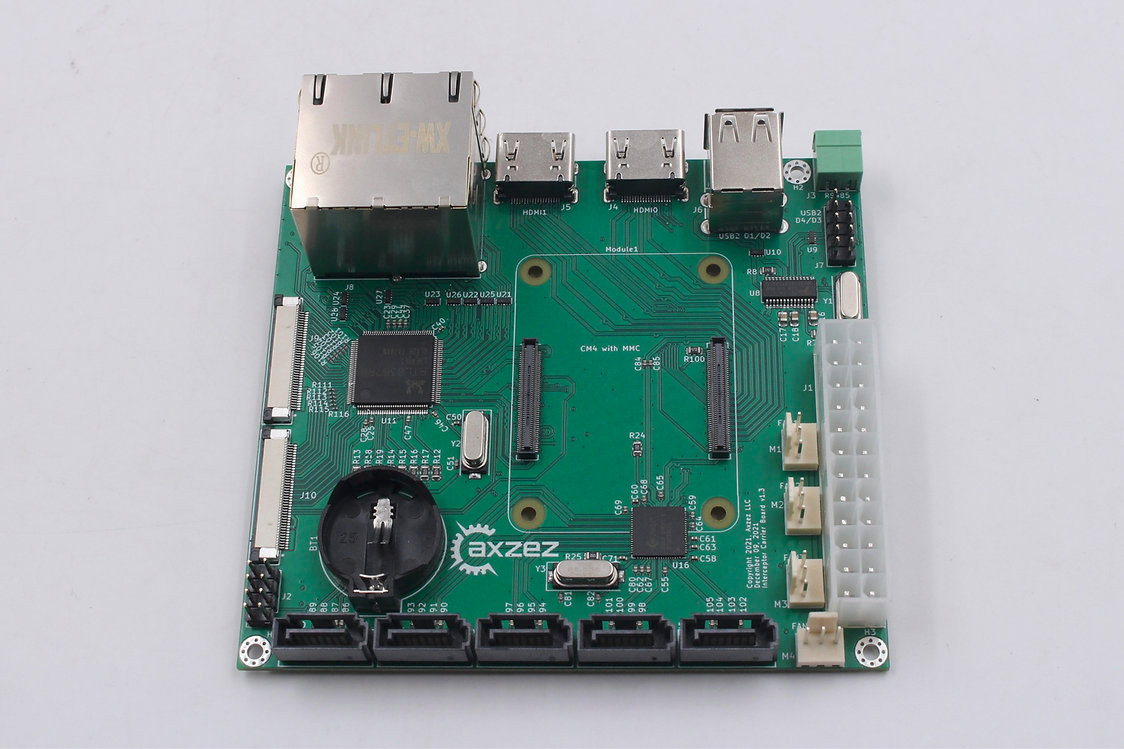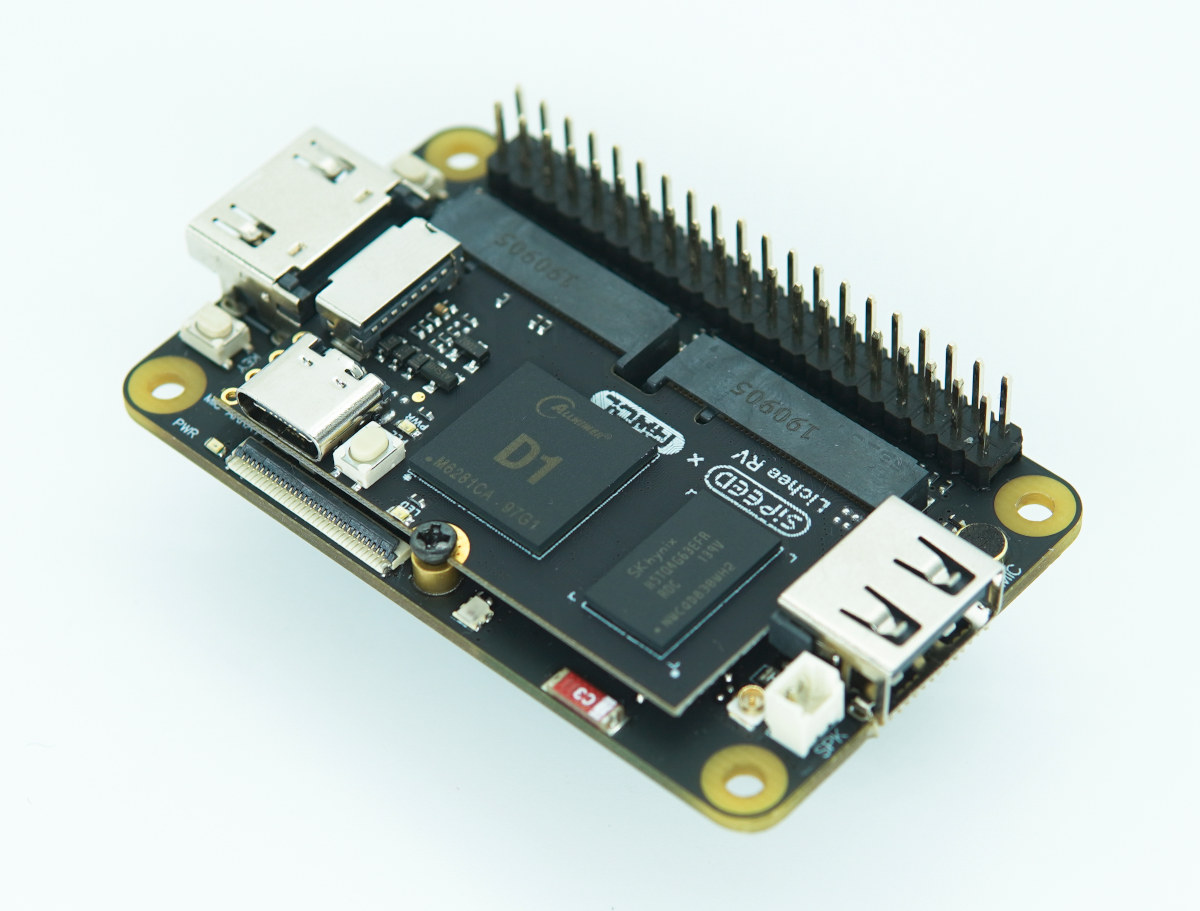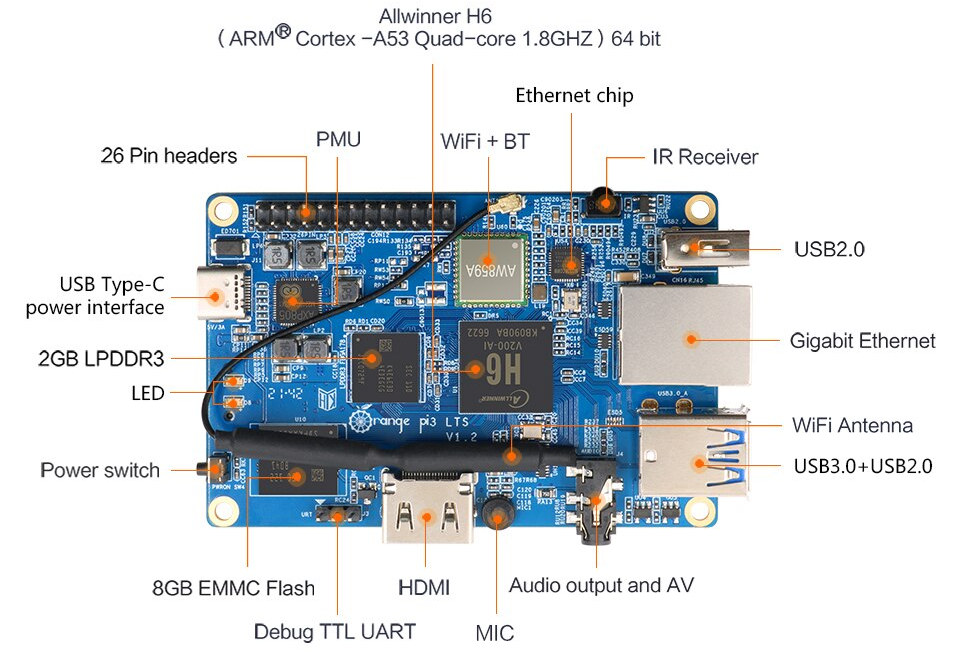PiGear Nano is an Nano-ITX carrier board for Raspberry Pi CM4 (Compute Module 4) designed for industrial applications with a -30°C to +80°C temperature range, 7 to 30V DC input, as well as RS232, RS485, and CAN bus interfaces. The board also features one Gigabit Ethernet port, one HDMI port, MIPI DSI and CSI display & camera interface, M.2 SSD storage, eight USB 3.0 ports, mini PCIe and SIM card sockets for 4G LTE cellular connectivity, and various digital input and output interfaces. Pigear Nano specifications: Supported SoM – Raspberry Pi CM4 and CM4 Lite modules Storage – 1x NVMe SSD M.2 socket, 1x MicroSD card slot for Compute Module 4 Lite only Display I/F – 1x HDMI Type-A connector, 1x MIPI DSI interface x 1 Camera I/F – 1x MIPI CSI interface Networking 1x Gigabit Ethernet RJ45 port Optional 4G LTE/GPRS via mini PCIe socket plus SIM card slot […]
Building a NanoPi M4V2 based All-in-One Linux PC running Armbian (Ubuntu/Debian)
At the end of my review of “RPI All-in-One” PC with Raspberry Pi 4, I noted the system also appeared to be compatible with NanoPi M4V2 single board computer. I’ve now tried it out, and assembling the board inside the 10.1-inch display is even easier than I initially thought. That means I now have a NanoPi M4V2 All-in-One PC running Ubuntu Hirsute or Debian Buster with XFCE desktop environment from Armbian, and most features work including the display and wireless connectivity, but I still have an issue with the touchscreen function. Here are the steps I followed initially: Download Armbian Buster XFCE image from Armbian and flash it to a microSD card with tools like USBimager. Insert the microSD card in the board Install the USB Type-C and HDMI-A adapters in the display. Insert the USB Type-C and HDMI port of the NanoPi M4V2 SBC into the adapters Install the […]
Radxa E25 carrier board, 2.5GbE switch, and WiFi 6 router
I’ve just received an early sample of Radxa E25 dual 2.5 GbE carrier board for Radxa CM3 Plus (RK3568) system-on-module, a 2.5GbE TP-Link switch, and Xiaomi AX6000 WiFi 6 + 2.5GbE router. Here’s the back story before looking into the devices. I’ll soon have to review UP Xtreme i11 mini PC with a 2.5GbE port, and after writing about the upcoming ROCK5 Model B SBC with both 2.5GbE and WiFI 6/6E, I realized I should really get some hardware to test 2.5GHz and WiFi 6. So I started to ask what could be the best options for a $200 budget. While thinking about it, I remember Radxa was working on the Radxa E23 board with 2.5GbE, and adding a WiFi 6 USB dongle might be an option. But they told me Radxa E25 would be a better option with two 2.5GbE ports and support for WiFi 6, although that one […]
Raspberry Pi CM4 Nano industrial mini PC supports wide temperature range, 12-18V DC input
If you ever wanted a mini PC similar to Raspberry Pi 4 but working within a wider temperature range and supply voltage, as well as a few extra features, the Raspberry Pi CM4 Nano industrial mini PC with a metal enclosure might be worth looking at. Based on the EDATEC CM4 Nano carrier board, the mini PC supports Raspberry Pi CM4 with up to 8GB RAM, 32GB storage, optional WiFi 5 and Bluetooth 5.0, and offers one HDMI port, a flat cable HDMI + Touchscreen connector, Gigabit Ethernet, three USB 3.0 ports and more. It works in settings with -25 to +60°C ambient temperature and offers a 12-18V DC input. EDATEC (Raspberry Pi) CM4 Nano specifications compared to Raspberry Pi 4 SBC: The company uses the Raspberry Pi OS image for the board plus a Board Support Package (BSP) specific to CM4 Nano to support extra features like the RTC: […]
ROCK5 Model B RK3588 single board computer is up for pre-order for $79 and up
Some will say “finally!” After years of waiting for Rockchip RK3588 processor, ROCKPi Trading Limited/Radxa got some samples for their ROCK5 Model B single board computer and has started to take pre-orders with discounted prices starting at $79 through distributors. But let’s check out the specifications first, with the octa-core Cortex-A76/A55 Pico-ITX SBC shipping with up to 16GB RAM, M.2 NVMe storage, 2.5GbE, optional WiFi 6E, 8K video output via HDMI or USB-C ports, 4K HDMI input, and more. Radxa ROCK5 Model B (aka ROCK 5B) specifications: SoC – Rockchip RK3588 octa-core processor with four Cortex-A76 cores @ 2.4 GHz, four Cortex-A55 cores @ 1.8 GHz, an Arm Mali G610MC4 GPU, a 6TOPS NPU, 8K 10-bit decoder, 8K encoder System Memory – 4GB, 8GB, or 16GB LPDDR4x Storage M.2 2280 socket for NVMe SSD (PCIe 3.0 x4) up to 2,000 MB/s MicroSD card socket eMMC flash socket Video Output 2x […]
Raspberry Pi CM4 carrier board comes with 5x SATA, 4x GbE, 2x HDMI, RS-485 interfaces
We just wrote that Wiretrustee carrier board for Raspberry Pi CM4 with four SATA interfaces was canceled and made open-source hardware a few days ago, but the Axzez Interceptor carrier board is offering a solution that is somewhat similar with 5x SATA ports and designed for NAS, NVR, IoT, and Managed Switch applications. The Interceptor Carrier Board for Raspberry Pi CM4 notably includes two 4Kp60 capable HDMI ports, 5x SATA ports, 4x RJ45 Gigabit Ethernet ports, 4x USB 2.0 interfaces, RS-485, and is powered via an ATX-24 connector, with a Mini-ITX adapter in the works. Axzez Interceptor specifications: Compatible SoM – Raspberry Pi Compute Module 4 Storage Support for 5x SATA HDD/SSD via JMicron JMB585 PCIe to SATA controller Supports software RAID 0, 1, 5, 6 or 10 HDD sleep/standby Video Output – 2x full-size HDMI 2.0 connectors (4Kp60) Networking – 4x Gigabit Ethernet ports via Realtek RTL8367RB switch; programable […]
Sipeed Lichee RV RISC-V module gets $5+ carrier board with HDMI and USB ports, optional WiFi
Sipeed introduced the Lichee RV Allwinner D1 Linux RISC-V board going for just $17 with 512MB RAM last month. While with a USB-C port it could be used as a standalone part, its dual M.2 connector makes it more like a module and we noted a tiny carrier board was in the works at the time. The baseboard is now available and known as the Lichee RV Dock adding HDMI and USB ports, as well as a 40-pin GPIO header for just $5, or $8 if you’d like to get Wi-Fi 4 and Bluetooth 4.2 connectivity through a Realtek RTL8723DS module. Sipeed Lichee RV Dock specifications: Supported system-on-module (SoM) – Lichee RV module with Allwinner D1 RISC-V processor @ 1 GHz, 512MB DDR3, MicroSD card slot, and USB Type-C OTG port Storage – Optional SPI flash Display interfaces HDMI port up to 4Kp30 Optional RGB interface for up to 720p30 […]
$35 Orange Pi 3 LTS SBC comes with 2GB RAM, 8GB flash, AW859A WiFi 5 and Bluetooth 5.0 module
Orange Pi 3 LTS is a cost-down, more compact version of Orange Pi 3 SBC launched in 2019 with Allwinner H6 quad-core Cortex-A53 processor, Gigabit Ethernet, four USB 3.0 ports, and mPCIe socket with a PCIe x1 Gen2 lane. AFAICR, the latter never really worked well due to a botched implementation in the SoC. The new slimmed-down Orange Pi 3 LTS is sized like a business card, loses the mostly useless mPCIe socket from the original board, comes with 2GB LPDDR3 RAM (no more 1GB RAM option), a lower number of USB ports, USB Type-C power input, and an Allwinner AW859A WiFi and Bluetooth module replaces the Ampak AP6256 module from the original board. Orange Pi 3 LTS specifications: SoC – Allwinner H6 quad-core Cortex A53 processor clocked at up to 1.8 GHz with Arm Mali-T720MP2 GPU supporting OpenGL ES 3.1/3.0/2.0/1.1, DirectX 11 System Memory – 2GB LPDDR3 (before 1GB […]


